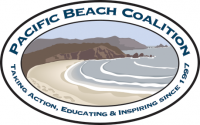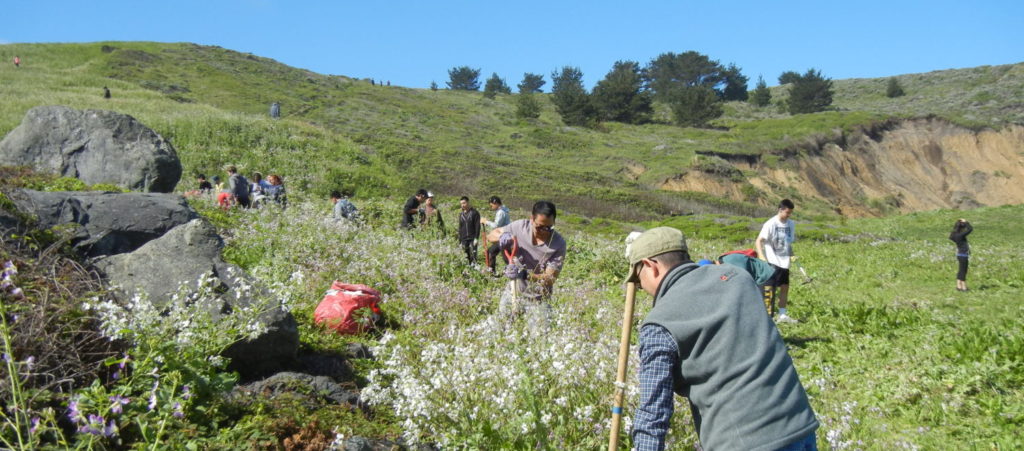Rockaway Switchbacks – Looking for Site Captains
If you are interested in joining our team of incredible site captains and love gardening, please send us an email at info @ pacificabeachcoalition.org. Thank you!
About the Restoration:
The Rockaway Switchbacks and beach bluffs habitat restoration project started three years ago with the question “what if”. The Rockaway Switchbacks area has been overrun by non-native invasive cape ivy, mustard, thistles, wild radish, fennel and other pest plants. What if we could tip the balance toward native plants and restore native habitat here?
Restoring this landscape involves removing non-native invasive plants and weeds (i.e., mustard, thistle, fennel and ox tongue) followed-up by planting locally sourced coastal native plants (i.e., yarrow, bee plant, coast buckwheat, seaside daisy and others) to maintain, increase and sustain biodiversity, and to stabilize hillside slopes.
Three endangered species are found near Rockaway Beach: the San Francisco garter snake, the San Bruno elfin butterfly, and the California red-legged frog. Habitat restoration is critical for preserving habitat for these endangered species.
Site Captain: WANTED
Where to Meet: The surfers’ parking lot at the base of the Rockaway Switchbacks by the bathrooms.
Driving Directions: At the stoplight intersection of Highway 1 and Fassler Avenue (inland) and Rockaway Beach Blvd (ocean-side), turn onto Rockaway Beach Avenue, and immediately turn LEFT onto Old County Road. Follow Old Country Road a short distance past the Holiday Inn Express into the surfers’ parking lot.
Parking: There is free parking in the surfers’ parking lot, and more parking nearby along Old County Road and vicinity.
Supplies: Volunteers are encouraged to bring their own favorite planting tools, a shovel or hoe, and reusable garden/work gloves. Extra gloves and specific tools will be provided while supplies last. Because we are never sure of the weather and it is often colder by the ocean and often windy, make sure to bring extra layers, a hat, sunscreen, water and snacks. Wear sturdy shoes for climbing hills and stomping on a shovel, and clothes that can get dirty.
Focus Area: Volunteers usually remove non-native and invasive plants along the hillside and plant native plants as conditions permit. We are often working standing or kneeling in the dirt on hillsides with uneven footing. Boots or sturdy shoes are best for walking on slopes and stomping on a shovel. Long pants and long sleeves are helpful to protect your skin from thorns and scratches. Wear clothes that can get dirty.
Focus Area: Volunteers usually remove non-native and invasive plants along the hillside and plant native plants as conditions permit. We are often working standing or kneeling in the dirt on hillsides with uneven footing. Boots or sturdy shoes are best for walking on slopes and stomping on a shovel. Long pants and long sleeves are helpful to protect your skin from thorns and scratches. Wear clothes that can get dirty.
Litter: The team picks up litter as we find it, although this is not the main focus of habitat restoration.
Restrooms: Public restrooms are located at the base of the switchbacks in the surfers’ parking lot.
Restrooms: Public restrooms are located at the base of the switchbacks in the surfers’ parking lot.
Be sure to read through the Cleanup Guidelines before attending a restoration event.
More questions? Read our Native Habitat Restoration FAQs.
Would You Like to Join Us? To make sure we bring the right amount of supplies, to be more efficient and conserve paper, please complete our online form. It will only take you a few seconds. Sign up here!
Can’t make it this time? Check out our calendar for more dates!

